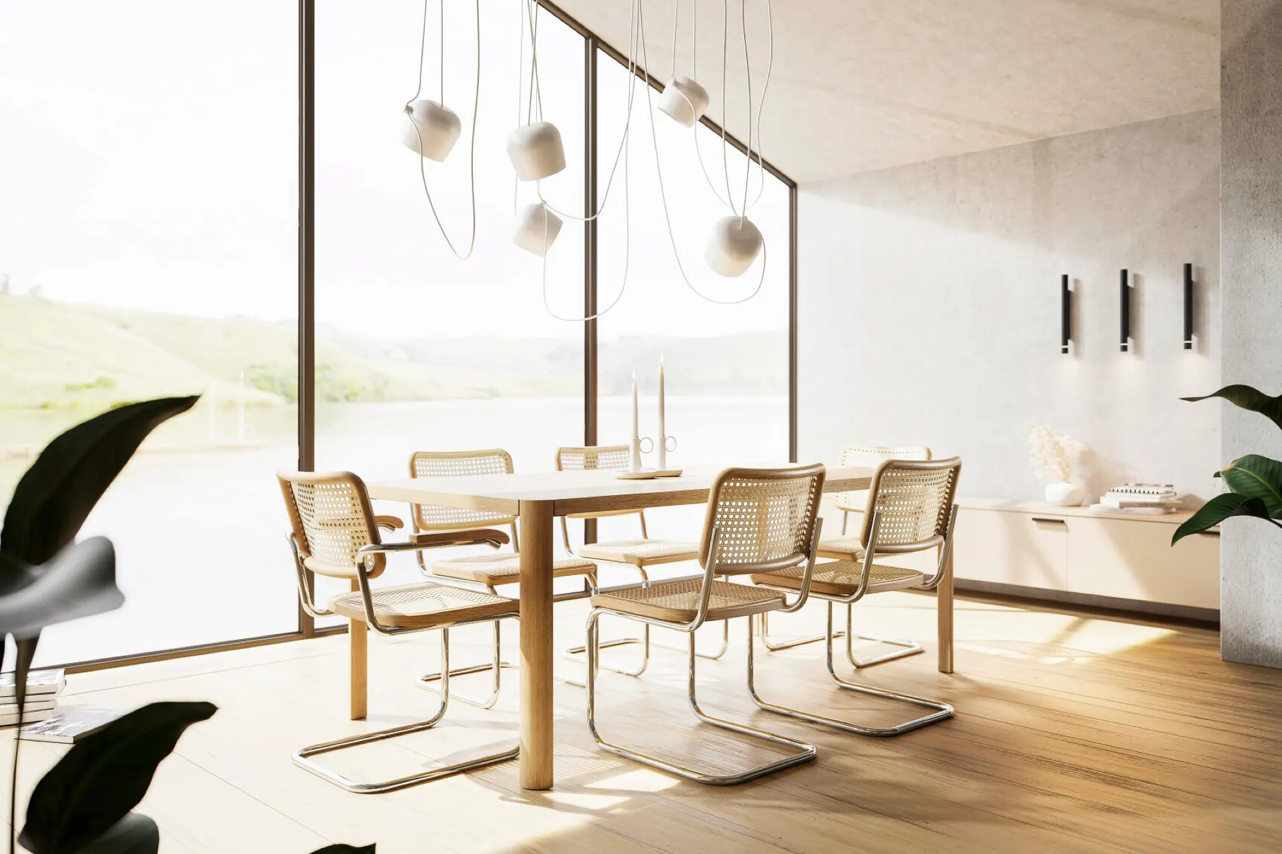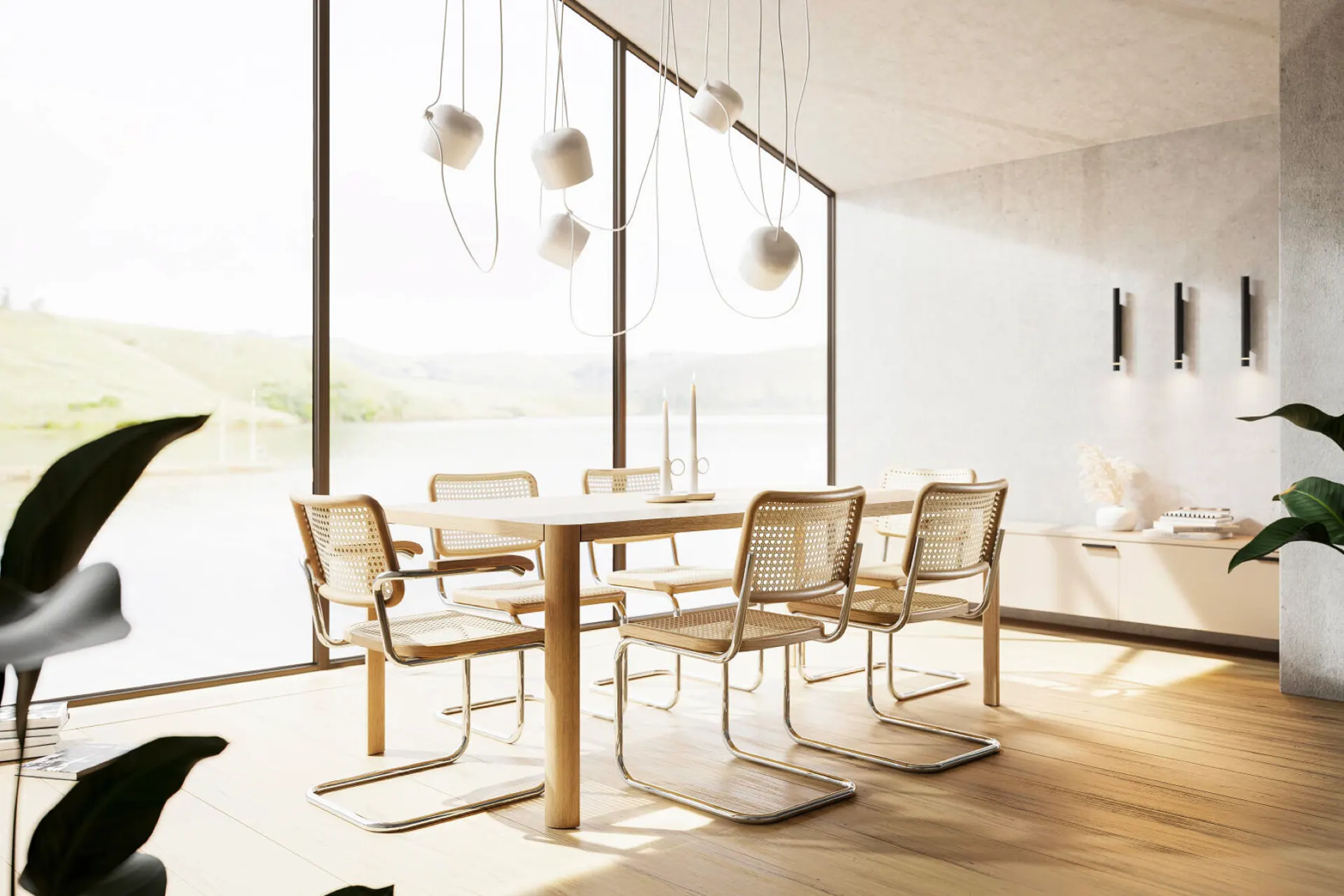Today, as in the past, Thonet furniture is part of the lives of many people around the world. Some appreciate them as classics steeped in history, others as everyday objects. Thonet furniture can be found wherever people meet, in homes, waiting rooms, offices and cafés.
The origins of Thonet
The history of Thonet begins with the work of cabinetmaker and joiner Michael Thonet, who opened his first workshop in 1819 in Boppard/Rhine. Thanks to his innovative woodworking techniques, Michael Thonet was able to produce elegant shapes that had never been seen before, and his reputation spread beyond his home region. The Austrian Chancellor Fürst Clemens von Metternich persuaded Michael Thonet to move to Vienna, where he took part in the interior design of the Liechtenstein Palace, broadening his skills and building up a network. In 1849, Michael Thonet founded a company in Vienna, which he renamed Gebrüder Thonet in 1853.
the cafés of Vienna
Thonet's development is inseparable from the café culture of the mid-nineteenth century. One of the young company's first commissions - the creation of chair no. 4 for the Café Daum on the Kohlmarkt, a Viennese institution frequented mainly by aristocrats and soldiers - made Thonet furniture famous throughout the city.
Michael Thonet made his international breakthrough in 1859 with chair no. 14, known as the ‘Viennese café chair’: the innovative technique of bending solid beechwood enabled almost industrial production for the first time. The chair was based on a modular principle and was delivered unassembled.
Around 1890, Thonet bentwood chairs were everywhere in Viennese cafés and restaurants. Members of the literary modernists met at the Café Griensteidl because of the wide selection of newspapers, and sat on Thonet chairs No. 4. Hugo von Hofmannsthal and Arthur Schnitzler were regular guests.
Thonet conquers Paris, then the world
In 1892, Henri Toulouse-Lautrec painted elegant ladies and gentlemen sitting on Thonet chairs at the Moulin Rouge. In 1918, Henri Matisse featured Thonet No. 20 in his ‘Violin Interior’, painted at the Hôtel de la Méditerranée in Nice.
In the 1920s, Thonet chairs were everywhere - in Venice's Lido, in Fleming's Restaurant in London's Oxford Street, in Berlin's Kempinksi-Weinstuben and Hamburg's Dammtor Pavilion, in ballrooms, casinos and grand hotels.
In the Deutscher Werkbund magazine ‘Die Form’, the architect Ferdiand Kramer reports, in a portrait of the Thonet company at the beginning of 1929, that average daily production at the time was 18,000 chairs, dominated by the very popular chair no. 14 (today 214).
The first tubular steel chairs:
Marcel Breuer, Mart Stam, Mies van der Rohe
Seventy years after the development of the No. 14 chair, Marcel Breuer created his first tubular steel objects, published by Thonet from 1930. The classics S 32 and S 64 represent an important link between the traditional bentwood technique and the modern bending of tubular steel. Viennese wickerwork recalls traditional craftsmanship, and the design that defines space with function (the cantilever chair initiated by Mart Stam) already points the way to the future. With the tubular steel chair S 35, first presented in 1930 at the ‘Section Allemande’, an exhibition of the Deutscher Werkbund in Paris, Breuer underlined the international importance of his designs.
As an architect in Berlin, Breuer furnished the homes of artists and intellectuals with this innovative furniture until the early 1930s. Modern artists, beyond the direct environment of the Bauhaus, were enthusiastic about Thonet furniture from an early stage. Karl Hubbuch, a representative of New Objectivity, repeatedly painted and sketched his wife Hilde Isay with the new tubular steel furniture. Photographic self-portraits from his studio show her with a bentwood chair or Thonet nesting tables.
In the 1930s, the company was the largest producer of innovative furniture designed by famous avant-garde architects such as Marcel Breuer, Mart Stam, Ludwig Mies van der Rohe, Le Corbusier and Charlotte Pérriand. The tubular steel furniture was manufactured using completely new production technology at the Frankenberg/Eder factory, where the company has been based since the end of the Second World War. Today, the first tubular steel furniture models are famous milestones in design history.
the break-up of the Second World War and the renaissance
At the end of the Second World War, Thonet loses its facilities in Eastern Europe to expropriation. From 1945 to 1953, Georg Thonet, the founder's great-grandson, rebuilt the Frankenberg factory in northern Hesse. Economic success soon returned, thanks in part to new products that reflected the times. From the 1960s onwards, Thonet began working again with famous designers such as Egon Eiermann, Verner Panton and Pierre Paulin.
Today, tubular steel furniture can be produced with less effort than bentwood furniture, which is still labour-intensive. Tubular steel can be shaped precisely and reliably by machines. The collection of tubular steel furniture is constantly evolving. Every generation can discover the appeal of Thonet originals. The materials, surfaces and colours of modern classics are constantly reinterpreted.
The Thonet classics available today are not museum pieces, but living elements of the collections, designed and refined for everyday use. In recent decades, internationally renowned architects and designers such as Stefan Diez, Lord Norman Foster, Alfredo Häberli, James Irvine, Naoto Fukasawa, Piero Lissoni, Glen Oliver Löw, Christophe Marchand and Hadi Teherani have designed for Thonet.



